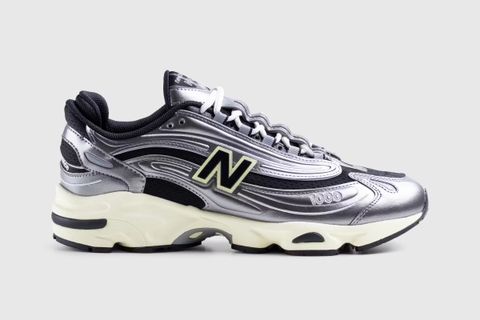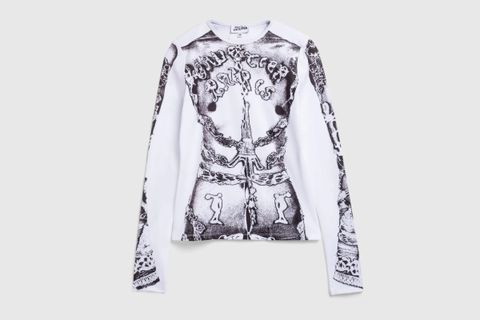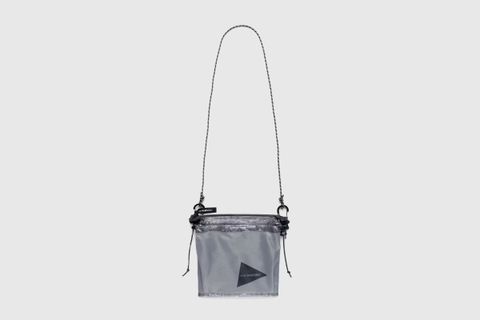What Is Golf Fashion, Anymore?
I sometimes forget that football, not golf, is called "the beautiful game." I think it's because when I do, on rare occasions, think of golf, I recall rolling hills, sweeping treescapes, manicured lawns pitted with sandy pockets. Manmade nature, to be sure, but beautiful still.
I'm certainly not thinking about the clothes.
Stereotypically speaking, contemporary golf clothes are more stuffy than they are beautiful. I'm thinking visors, cleated derby shoes, giant polos, slim chino pants. The elderly cardigans and giant-rise trousers of the Arnold Palmer generation are long gone and, with them, my interest in golfwear (in fairness, I'm just way more interested in dressing like a grandpa than sports).
But over the past half-decade or so, especially in the wake of the COVID-19 pandemic, a sect of golf-streetwear labels have sprung up, perpetuating a notion of this newfound cool-golf gold rush founded on what they consider to be genuinely stylish golf clothes.
Suddenly, they say, golf is setting culture's pace to the tune of famously fashionable sports like basketball, football, and motorsport.
But is it? Really?
Well, mere days after the Masters Tournament ended in mid-April 2024, you may have thought so.
That's when a miniature golf clothing boom swelled into broader fashion culture as a confluence of companies separately, but simultaneously, proposed their overlapping visions of contemporary golfwear.
Surely, if anything is proof of golf's ascendance to the forefront of fashion, this was to be it.
Aimé Leon Dore landed on the green with its typically cosmetic approach; Tiger Woods made headlines by launching his post-Nike "athluxury" clothing label; upstart imprint Malbon teed up a series of impressive collaborations with household names like Jimmy Choo, New Balance, and adidas.
And only a few weeks prior, Tyler, the Creator envisioned tiny golf bag-shaped pouches for Pharrell's Louis Vuitton.
Yes, you'd think that we were living through a veritable golf fashion golden age.
Save for the fact that these are golf clothes are only barely discernable as such.
Like, would any of these items read as golfwear were they not embroidered with little golf flags or worn by models clutching putters?
This is a core quibble extant since the early days of the golf-streetwear crossover: what even are "golf clothes," really?
Bucket hats? Stretch chinos? Grandpa's mothballed sweater-vest? I'll allow that one pullover with extra-long seams at the neck but, otherwise, no one piece singularly screams "You wear me when you play golf."
Because it's not that golf clothes aren't cool, it's that they have an identity crisis.
Like tennis clothes, golfwear historically falls under a general banner of "prep" but, whereas tennis has carved out its own fashionable niche, even the best-looking golfwear is founded on borrowed cultural cues.
It's a top-down framework, one that prevents contemporary golfwear from establish a unique stylistic identity.
Are the clothes unstylish? Certainly not. Are they distinctly "golf?" Not really.
Notice how Malbon Golf's New Balance collaboration affixed cleats to the sole of the wildly popular 550 sneaker. This is a classic golf-streetwear trope, wherein a shoe made popular by a different sport — typically basketball or running — is imported into golf culture with a sole swap.
Recall Brooks Koepka's Off-White™ Nike Air Max shoes, which baffled golf pundits at the time. Turns out, Koepka was way ahead of the curve here: todays golfers are following his suit in taking streetwear cues to the links.
It doesn't become a golf shoe: it becomes a shoe adopted for golf. A big difference, because it represents a bigger point.
This isn't streetwear adopting golf, it's golf adopting streetwear.
This is not a knock against these young upstarts, none of whom pretend to be reinventing the wheel.
Emerging imprint Forden Golf acknowledges in its Instagram bio that its aim is to "re-envision the aesthetic" of golf, which is why it sells trim sweatpants instead of the creased khakis of old.
Is that so wrong? Certainly not.
Because golf is now more of an idea alone. It is an activity, not a single look.
That's good for capturing a wider audience — America's National Golf Foundation recording a growing number of young players — not terribly interested in wearing a staid uniform to hit a few links.
And in a way, that frees up golf in ways that other sports can only aspire to.
Whereas football has its jerseys, basketball its shorts, Formula 1 its jumpsuits, golfwear's definition has widened to allow in hoodies, jeans, retro sportswear, whatever. It's less specific — and in turn less iconic — but it's also more egalitarian.
Down with the country club attitude, up with the people.
Now, golf fashion is whatever you make it. And that's for the better.


